Paver installation enhances the appearance of your garden and expands your indoor and outdoor living area.
Before conducting this project, you must consider various factors, such as budget, water feature, or usage purpose, to have a beautiful place to relax.
At the same time, you may want to know how long these slabs can cure. When can you walk on a newly laid patio?
If you plan to do this construction project, check this article out to get some tips for speeding up the drying process. Let’s get started!
Table of Contents
When Can You Walk On A Newly Laid Patio?
Avoid stepping on a newly laid patio for 24 – 48 hours to give it time to firm, dry, and develop into your carefully planned, exquisitely built deck.
After only a couple of hours, concrete may harden and become sturdy enough to support a person.
However, it’s crucial to remember that the more extended this material sits, the more durable it gets.
You must keep protecting concrete throughout this period since concrete doesn’t achieve its maximum strength until it has fully cured.
Your new courtyard will have reached its maximum compressive strength after around 28 days of concrete curing.
Although the difference won’t be visible outside, rushing the job risks compromising the concrete’s structural integrity.
It might shorten its lifespan by around 50 years, requiring you to repair or replace the concrete earlier than you originally anticipated.
The good news is that you don’t have to prevent anyone from walking on your brand-new patio for a month.
Even if the waiting time is considerably less, you might want to use some protection measures in the interim.
Look through the following guides to know when you can freely walk on your newly laid patio!
After A Couple Of Hours
A newly built patio may begin to harden right away and be able to hold some weight in only a couple of hours.
For this reason, when concrete has been poured, you may observe construction workers standing on it.
They can now finish the pavement by adding sealants or embellishments. Nevertheless, the material is currently fragile.
If you’re not cautious, it’s still possible to mark the pavement. At this stage, it is not safe for an ordinary person to walk on the surface.
After One Day
You may step on your newly laid concrete freely after one day. It’s better to leave it to sit longer if it rains or if you have stamped ornamental designs into the concrete.
It’s acceptable to walk on the surface at this time, but you need to be careful, as foot traffic may cause damage to your patio.
It would be best to leave these things on your pavement, including pets, strollers, bikes, or skateboards, because they may leave the grooves.
After One Week
After seven days, you may safely let most traffic types on your newly installed pavement without being concerned that they will damage the surface.
Your patio is even secure enough for automobiles to travel on. Semis and trucks must wait a little longer because of their sizes and weights.
Although the material will continue to cure underneath the surface, there won’t be any changes to its functionality or look after this point.
After One Month
Concrete needs around 28 days to dry and cure properly. It has now reached the pinnacle of its strength.
Your new patio should endure for roughly 50 years if you maintain it properly up to that time, at which point you should consider replacing it once again.
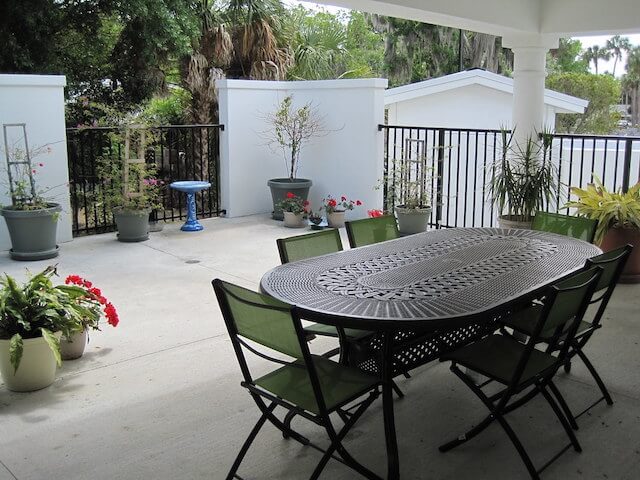
How To Speed Up The Drying Time?
You will find it challenging to keep anything off the newly laid patio for a few days. Thus, you might be keen to know how to quicken the drying time.
It’s vital to examine the elements that will affect the duration the patio requires to dry before you can walk on it.
Water amount
You must carefully consider the amount of water you should add to the concrete mix used for your patio.
The concrete mixer may need a longer time to dry and cure if you add more water than the strictly necessary amount.
Humidity
It’s essential to keep in mind that moisture will need to escape from your cement mixture and into the surrounding air.
This phenomenon only occurs when the surrounding is greatly more dehydrated than the construction material.
The water will require more time to evaporate from the pavement into the atmosphere if the surrounding air is humid, delaying the drying process.
Temperature
The temperature will also influence the time required for your composite material to cure.
Concrete needs more time to cure thoroughly if the weather is chilly. Remember these elements when determining whether or not your pavement is dry.
You may use various methods to hasten the drying process of your pavement so that you can try them.
Increase Calcium Chloride
Workers often use calcium chloride to hasten the cement drying time. You can also apply this method with concrete.
You may add a particular component, calcium chloride, to the mixture to hasten the curing and drying process.
However, it would be best to consider what you put on the surface of the newly built pavement.
However, calcium chloride is unsuitable if you use rebar or steel as structural elements because it severely damages these materials.
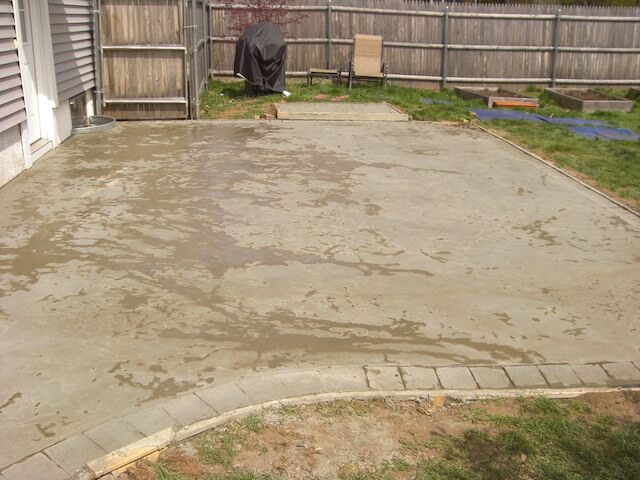
Use A Dehumidifier
A dehumidifier will remove moisture from the air, drying your patio off.
Thus, it will be considerably more straightforward for the moisture in the concrete block to evaporate and go into the environment.
Use A Heater
Adding a heater may be a good idea if the climate in your region is relatively chilly.
Space heaters can make a significant difference, despite their restricted range of helpful functionality.
Use Concrete Blankets
Apart from the above solutions, you can also use insulated blankets to heat the newly installed patio.
These blankets are made to hasten the curing process, especially in cold and wet conditions.
When laying concrete outside, these materials are crucial. By doing this, you may shield your pavement from the weather.

How To Take Care Of Your Newly Laid Patio?
Once you have finished your patio, it is crucial to protect it. It would help if you did a few necessary actions, as shown below.
Use Water Properly
After laying your deck, it’s best to spray it with water. You might spray it 5 – 10 times daily during the first week after the installation of your pavement.
If it’s freezing outdoors, don’t spray your patio since it may damage it.
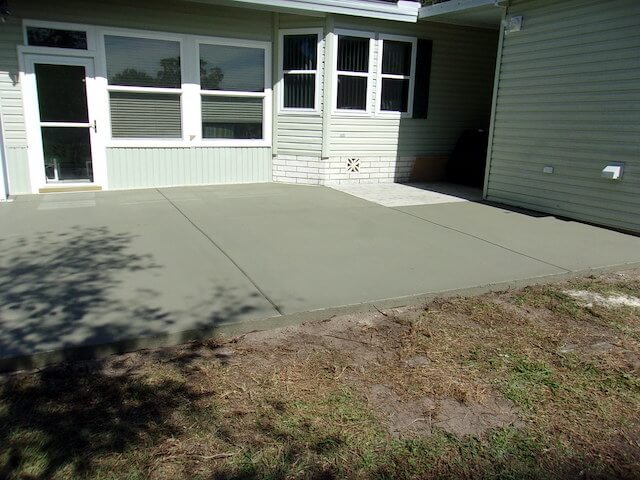
Cover Your Patio
It’s necessary to cover your newly built patio. This action is especially essential if you don’t plan to spray this area with water.
Various specialized sheets are available, so you can choose the most suitable for your outdoor space.
If you cover your pavement for a few days after laying, it can significantly affect the final quality of the construction.
Use A Curing Compound
It’s also a great idea to apply a curing compound. It’s a soluble solution that instantly forms a protective coating on the surface when sprayed on the pavement ground.
This way, the patio surface can cure and dry consistently. It’s crucial to ensure the material is strong.
This product comes in various options and categories. Thus, check some types and determine which is suitable for this DIY project.
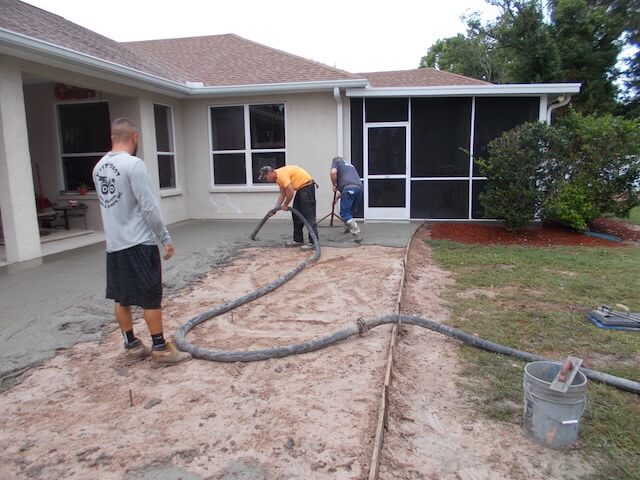
Never Skip The Control Joints
Ensure your construction is of a good caliber and isn’t susceptible to breaking.
Avoid skipping the control joints, even if you undoubtedly want to finish the procedure as soon as possible.
It’s an excellent idea to position the pavement in those predefined areas to stop it from cracking.
Cut them approximately a fourth into the slabs when the concrete is starting to cure.
Don’t Let Your Patio Get Cold
Making sure the patio doesn’t become too chilly can help prevent cracking in the concrete.
Five to seven days after laying concrete, the temperature has to stay over 50 ℉. Use warming blankets if you are worried that it may become too chilly.
Don’t Apply Painting Immediately
While you may step on your new deck after a couple of days, it’s not the best time to stain or paint it.
The ideal time to apply paint and stain on your patio is after at least 24 months.
Otherwise, you risk pressing down on the surface and having your paint start to flake off the area.
When you work to maximize the use of your outdoor space, keep these considerations in mind.
If you need more help, you can consult with professionals in this field to address your questions.
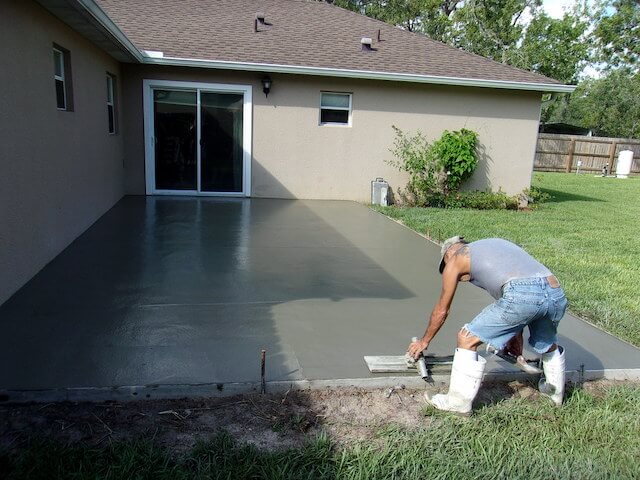
Final Thoughts
When can you walk on a newly laid patio? After 24 to 48 hours, you can step lightly in this area.
Besides, you can hasten the drying and curing process with various methods like using a heater, adding calcium chloride, or using insulated blankets.
Hopefully, you will be successful with these tips. If you have further questions, please send us a message. Thanks for taking the time to read this post!

